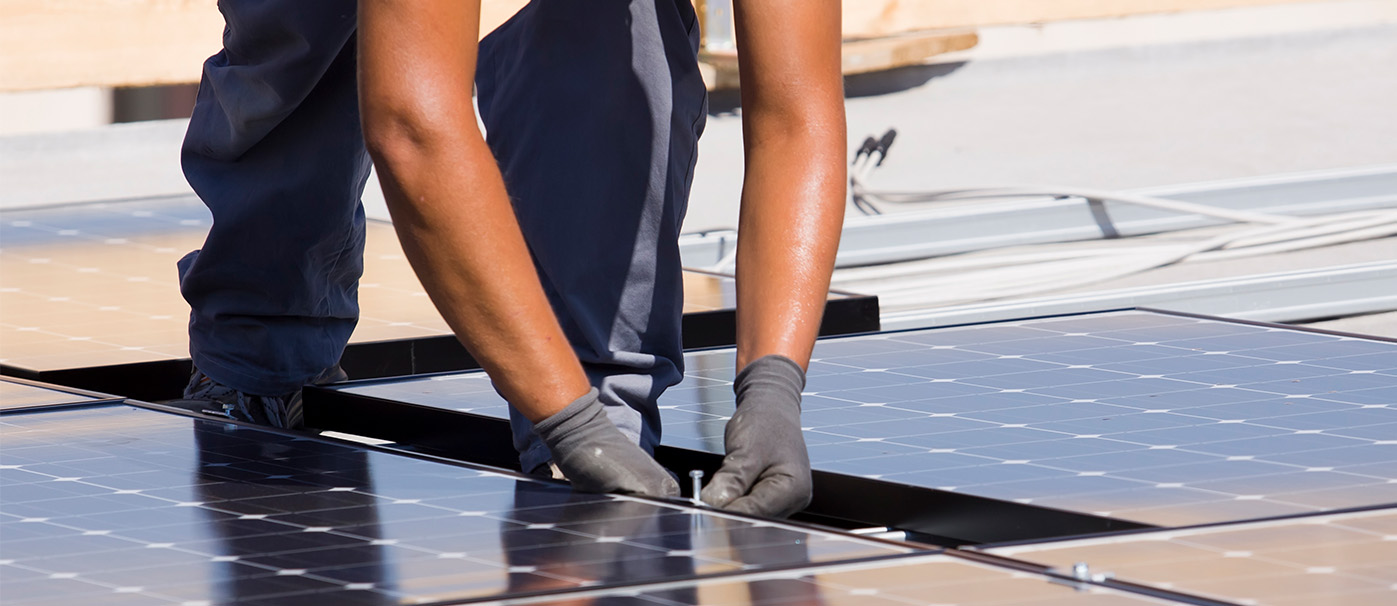Out Now
The Aussie Issue
Current Issue
The Aussie Issue
DEC 25 - JAN 26

A photovoltaic system seems a smart choice for powering your home. And it could be a great way to power up your career, too. Want to get into solar but not sure where to start? We’ve got you.
While around one in four households in Australia currently enjoy the benefits of rooftop solar, that means there are three in four that don’t, and the opportunities for electricians are obvious.
The Australian Energy Market Operator estimates more than 10 panels per minute are being installed around the country, when large-scale solar projects are factored in.
Of course, some places have more potential than others, with Queensland and South Australia leading the nation in rooftop solar. But the highest number of systems installed in 2020 were in NSW. A whole new industry has been created and thousands of sparkies now specialise in solar power. So what to do if you can spot potential in your neighbourhood?
Although solar systems are not highly complex in the great scheme of things, anyone who wants to install and/or design a standalone power system (SPS) and/or grid connected (GC) solar photovoltaic system must be trained, licensed and accredited long before he or she sets foot on a roof.
The federal government announced back in 2010 that anyone installing solar panels under its Renewable Energy Target (RET) scheme is required to be a licensed electrician and accredited by the Clean Energy Council (CEC), the peak body representing Australia’s clean energy sector. So, while it’s not technically a legal requirement, you’re unlikely to get far in the clean energy biz without it.
CEC accreditation demonstrates competence in design and/or installation of solar PV power systems, you’ll need to do the training. That means you’ll need to complete all the relevant training units including (but not limited to!) installation, deign,
repairs, grid connection and battery storage. There are a number of registered training organisations (RTOs) that offer the units required for accreditation, such as NECA, TAFE and others. You can find out about courses in your state on the CEC website.
Once you have completed your training, submit copies of your training certificates, public liability insurance, electrical licence and working at heights certificate (see below), make the application payment and all being well you will receive a three-month provisional accreditation.
After getting the provisional accreditation, you then have 30 days to complete an online assessment of your new-found knowledge. Once this has been successfully completed, you’ll receive an accreditation number and can begin working as a CEC-accredited designer or installer.
Assuming you want to install as well as (or instead of) design, you will also need to complete a practical assessment before your provisional accreditation expires. Once all assessments have been completed, you will be able to upgrade your accreditation online. Accreditation lasts for a year and needs to be renewed annually, with proof that you have kept up to date with changes in the industry.
Probably the biggest safety issue for solar installers is that they are always working at heights. Even on a flat roof, the working day is all about the weather and rain and high winds are a serious health and safety issue. All solar installers are therefore required to undergo rigorous working at heights and occupational health and safety training to prevent injury to themselves or others when working on roofs. Approved and regularly maintained fall protection equipment must also be used.
Keep up to date with our latest news and competitions by subscribing to our regular newsletter.

Issue 189
OCT - NOV 2025

Issue 188
AUG - SEPT 2025

Issue 187
JUN - JUL 2025

Issue 186
APR - MAY 2025

Issue 185
FEB - MAR 2025

Issue 184
DEC 2024 - JAN 2025

Issue 183
OCT - NOV 2024

Issue 182
AUG - SEPT 2024

Issue 181
JUN - JUL 2024

Issue 180
APR - MAY 2024

Issue 179
FEB - MARCH 2024

Issue 178
DEC 2023 - JAN 2024

Issue 177
OCT - NOV 2023

Issue 176
AUG - SEPT 2023

Issue 175
JUN - JUL 2023

Issue 174
APR - MAY 2023

Issue 173
FEB - MAR 2023

Issue 172
DEC 2022 - JAN 2023

Issue 171
OCT - NOV 2022

Issue 170
AUG - SEPT 2022

Issue 169
JUN - JUL 2022

Issue 168
APR - MAY 2022

Issue 167
FEB - MAR 2022

Issue 166
DEC 2021 - JAN 2022

Issue 165
OCT - NOV 2021

Issue 164
AUG - SEPT 2021

Issue 163
JUN - JUL 2021

Issue 162
APR - MAY 2021

Issue 161
FEB - MAR 2021

Issue 160
DEC 2020 - JAN 2021

Issue 159
OCT - NOV 2020

Issue 158
AUG - SEPT 2020

Issue 157
JUN - JUL 2022

Issue 156
APR - MAY 2020

Issue 155
FEB - MAR 2020

Issue 154
DEC 2019 - JAN 2020

Issue 153
OCT - NOV 2019

Issue 152
AUG - SEPT 2019

Issue 151
JUN - JUL 2019

Issue 150
APR - MAY 2019

Issue 149
FEB - MAR 2019

Issue 148
DEC 2018 - JAN 2019

Issue 147
OCT - NOV 2018

Issue 146
AUG - SEPT 2018

Issue 145
JUN - JUL 2018

Issue 144
APR - MAY 2018

Issue 143
FEB - MAR 2018

Issue 142
DEC 2016 - JAN 2017

Issue 141
OCT- NOV 2017

Issue 140
AUG - SEPT 2017

Issue 139
JUN - JUL 2017

Issue 138
APR - MAY 2017

Issue 137
FEB - MAR 2017

Issue 136
DEC 2016 - JAN 2017

Issue 135
OCT - NOV 2017

Issue 134
AUG - SEPT 2016

Issue 133
JUN - JUL 2016

Issue 132
APR - MAY 2016

Issue 131
FEB - MAR 2016

Issue 130
DEC 2015 - JAN 2016

Issue 129
OCT - NOV 2015

Issue 128
AUG - SEPT 2015

Issue 127
JUN - JUL 2015

Issue 125
APR - MAY 2015

Issue 125
FEB - MAR 2015

Issue 124
DEC 2014 - JAN 2015

Issue 123
OCT - NOV 2014

Issue 122
AUG - SEPT 2014

Issue 121
JUN - JUL 2014

Issue 120
APR - MAY 2014

Issue 119
FEB - MAR 2014

Issue 118
DEC 2013 - JAN 2014

Issue 117
OCT - NOV 2013

Issue 116
AUG - SEPT 2013

Comments (0)
Write a Comment